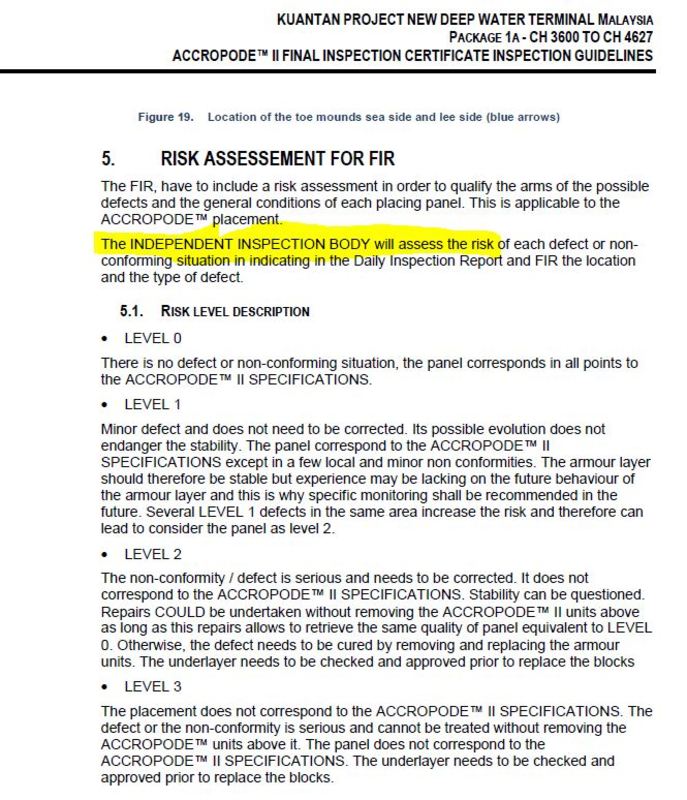LEVELS OF RISK
Experience has shown that the use of TIDs provided by license vendors is not sufficient to correctly construct a dike shell using artificial blocks of the ACCROPODE™, ACCROPODE™II, ECOPODE™, CORELOC™, X-types. bloc ® , BS1, BS2, BS3 and others. Compliance with the recommendations does not in all cases prevent damage to structures and the breakage of artificial blocks. There are also situations where non-compliance with these texts can be maintained without any risk. From there was born our reflection on the establishment of a classification of risks related to non-conformities and the installation in general of blocks of the ACCROPODE™, ACCROPODE™II, ECOPODE™, CORELOC™, X-bloc ® type, BS1, BS2, BS3 and others.
As part of the certification of dike shells, implemented by IDMer from 2010, then by CLAS when IDMer became CLAS, we use a classification of risks related to non-compliance. This risk classification makes it possible to maintain a non-conformity if the risk analysis leads to a score of 0. This means that an area which would be perfectly stable and solid will not have to be rebuilt unnecessarily.
In a pragmatic way, four levels of risk emerged from these studies. This classification has become an international standard implemented on many projects around the world as part of the certifications of works that we have carried out, of which we only mention a few here: KHALIFA PORT in 2010, ZAKUM M, ZAKUM S, ZAKUM N, ZAKUM W, KUANTAN, EASTERN MARINA BEIRUT, PUERTO MOIN, PORT DE LA TURBALLE, PORT D'ARGELES SUR MER and many others that you will find by clicking on the link
This risk classification has been the subject of an intellectual property registration with the INPI. Our philosophy is to allow free use of this classification, which has demonstrated its usefulness and relevance. We do not wish to protect and block its use, we wish to preserve the acknowledgment of paternity.
It is this classification of risk levels that was used to establish the risk analyzes on the four NRL breakwaters on Reunion Island.

It is also required in certain projects as can be seen in the call for tenders for the reconstruction of the Saintes Maries de la Mer seawall in the south of France:

The risk classification on four levels from 0 to 3 established by C LAS has become an international standard, but this tool cannot be used by personnel who have not been properly trained in its use. It takes more than a year of practice on different projects and different types of blocks to master the use of risk assessment related to non-conformities and the laying of artificial blocks of the types ACCROPODE™, ACCROPODE™II, ECOPODE ™, CORELOC™, X-bloc ® , BS1, BS2, BS3 and others.
It's like playing a piano, it's easy to make noise by tapping on the keys of the keyboard, but it's very difficult and very long to learn to play BEETHOVEN.
For example in a recent project, where we were engaged as an expert, we diagnosed a level 1 risk, concerning an ACCROPODE™II block which was in danger of breaking soon. The study carried out by the actors on the site concluded that there was no risk, in particular because according to them, this ACCROPODE™II was installed in accordance with CLI's TID.

The year after this ACCROPODE™II was broken, confirming the diagnosis established by CLAS:

In another case we established a 0 risk for an obvious non-compliance on a broken ACCROPODE™II, for which we recommended not to replace it:

The use of the risk classification must take into account the attitude of the block concerned, its general environment, its position in the armor layer and its ability to move in the event of a swell. This knowledge cannot be improvised and can only be implemented by seasoned technicians on several types of blocks and with a solid experience of several years.
CLAS now has specialists in the construction of dykes using the ACCROPODE™, ACCROPODE™II, ECOPODE™, CORELOC™, X-bloc®, BS1, BS2, BS3 and other artificial blocks technologies, which ensure a presence at full time on projects.
Our inspectors have worked on the biggest projects in the world such as RAS LAFFAN, KHALIFA PORT, BARAKAH NUCLEAR POWER PLANT, PUERTO MOIN, KUANTAN PORT and many other projects all over the world.
This exclusive experience and the qualities of professional divers have given CLAS inspectors unique opportunities to observe the movements of blocks in water, to study the consequences and understand the mechanisms of destruction.
From this exclusive experience based on the observation of TETRAPODE, ACCROPODE™, ACCROPODE™II, ECOPODE™, CORELOC™, X-bloc®, BS1, BS2, BS3 and other blocks, in real conditions, and not just in the laboratory, allowed us to develop a ranking of risks related to non-compliance during construction. This study integrates the breakage of blocks following movements, which cannot be studied in the laboratory to date.
Today this expertise is required by project owners concerned with guaranteeing the durability of their works, as it has been proven today that the "traditional" implementation without CLAS certification does not always allow these objectives to be achieved.
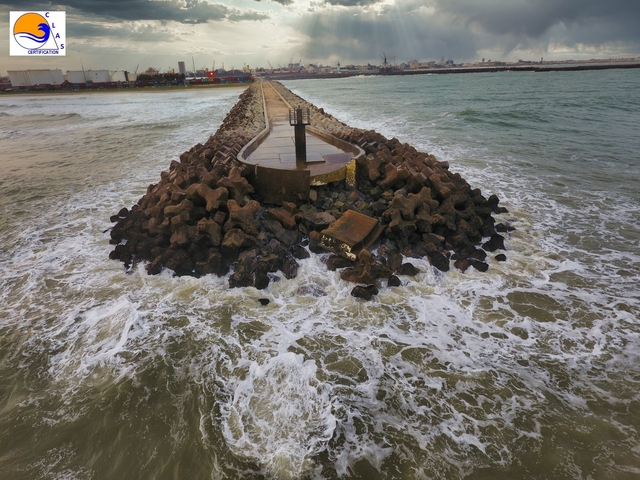
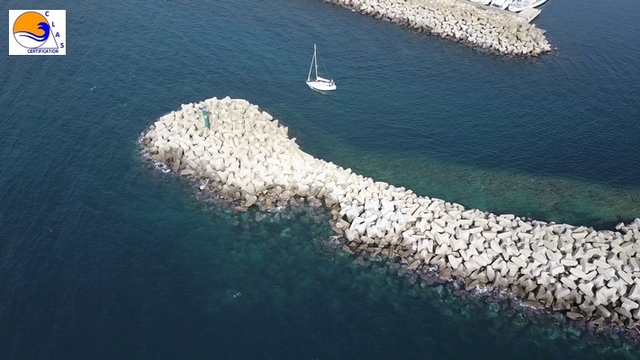
RISK CLASSIFICATION TABLE AND REQUIRED ACTIONS
| Level of risks | Required actions |
| 0 | No action |
| 1 | Isolated fault to be repaired without urgency or monitored |
| 2 | Serious isolated fault to be repaired urgently |
| 3 | Unstable area or grouped faults. Rebuild |
These risk levels have been used on many international projects such as the new dike on the island of ZIRKU, the protection dikes of DAS ISLAND and the islands of ZAKUM in the UNITED ARAB EMIRATES, the dikes of PUERTO MOIN in COSTA RICA or here on the KUANTAN project in Malaysia where CLI and the project owner called on the expertise of CLAS:
Example of classification of risks associated with the installation of artificial blocks
Correct installation risk 0
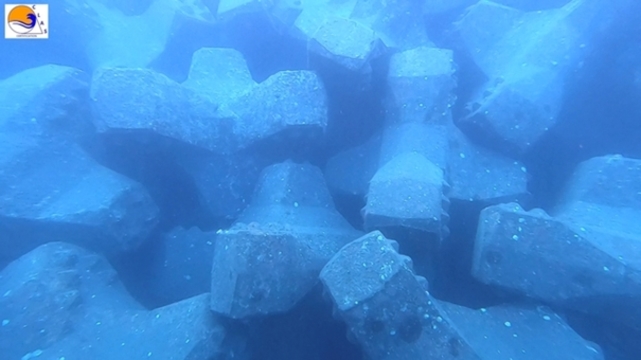
Risk 1 isolated nesting defect: repair or monitor
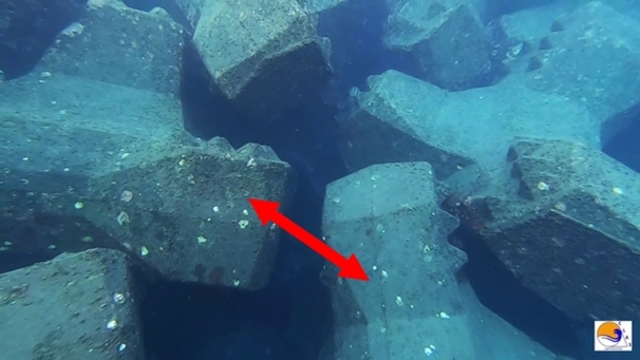
Risk 2: Significant nesting defect, risk of extraction but ACCROPODE™II isolated. Repair imperatively
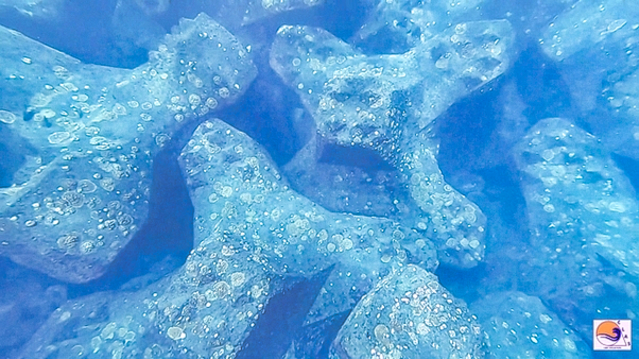
Risk 3: ACCROPODE™II extracted from the shell by the swell, unstable zone. Rebuild area.
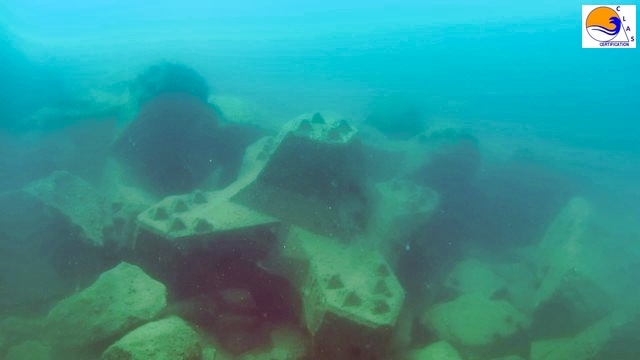
Risk 3: Design profiles are not respected. The ACCROPODE™II are lowered down the slope of the embankment.
Rebuild the area in accordance with project requirements.
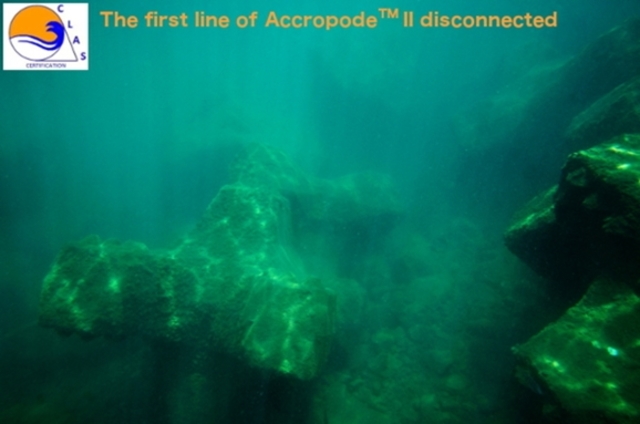
Since this table of risk levels has existed, CLAS has continued to deepen its criteria as well as its knowledge of the mechanics of destruction with regard to construction defects.
This risk classification table is still current. The know-how which makes it possible to classify the non-conformities in each section is transmitted to the CLAS inspectors during their training within our company by the senior inspectors.
A CLASS A structure is a TETRAPODE, ACCROPODE™, ACCROPODE™II, ECOPODE™, CORELOC™, X-bloc ® , BS1, BS2 or BS3 shell presenting a zero level of risk with regard to the care taken in its construction.
It's not a CLAS project It's a CLAS project
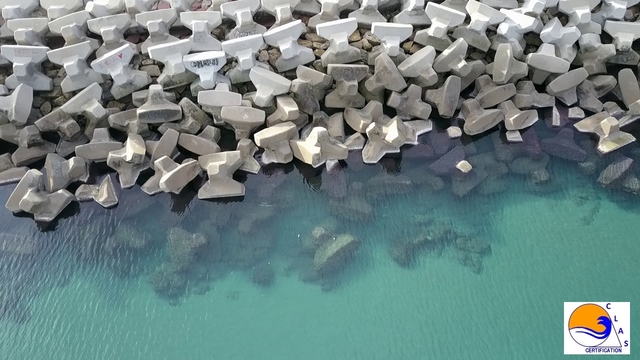
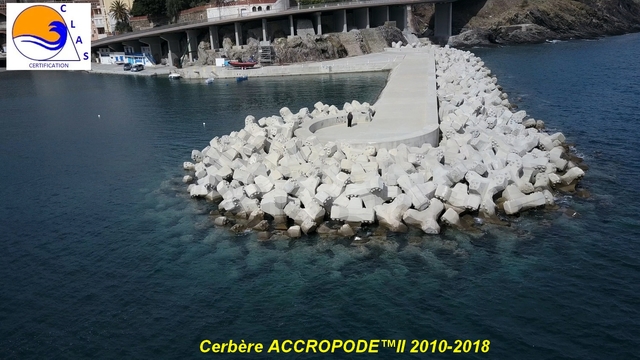
Our certification procedure and the associated risk analysis were implemented on the new Beirut Marina project, at the request of the contracting authority, the company SOLIDERE.
The works have been certified by CLAS: CLASS A BREAKWATER
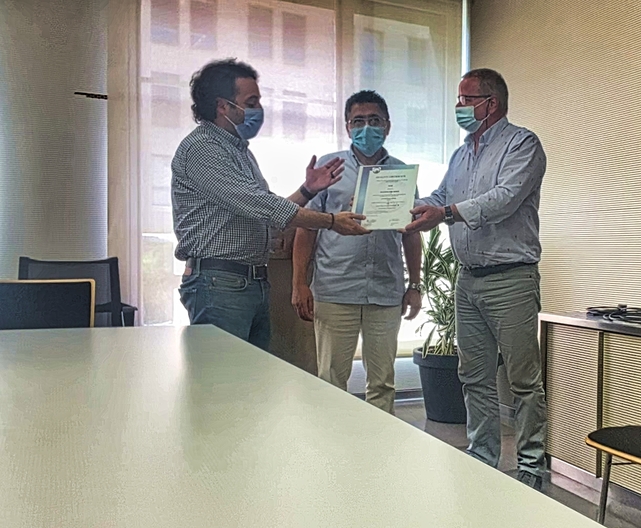
The structures built and the ACCROPODE™ shells withstood the storm Loulou which generated a swell close to the project swell on December 26, 2019 and the explosion of the port of Beirut on August 04, 2020. The contradictory expertise carried out in September 2020 has confirmed that no ACCROPODE™ has moved, broken or disconnected.
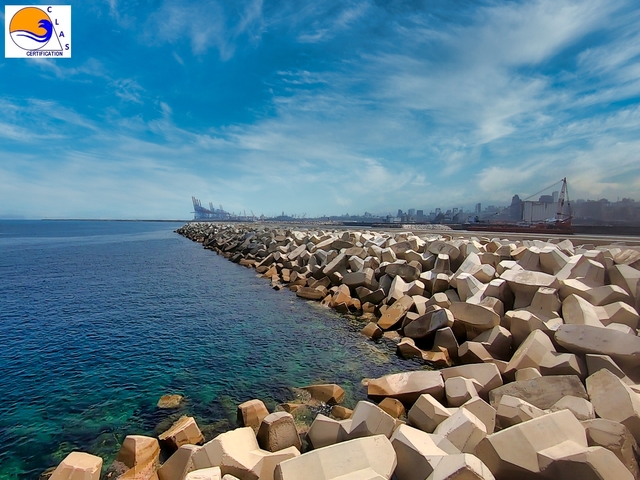
We put this expertise and this risk analysis at the service of the project manager and the contracting authority on the NRL project on the island of Reunion, where we were able to provide precise information on the risks incurred.
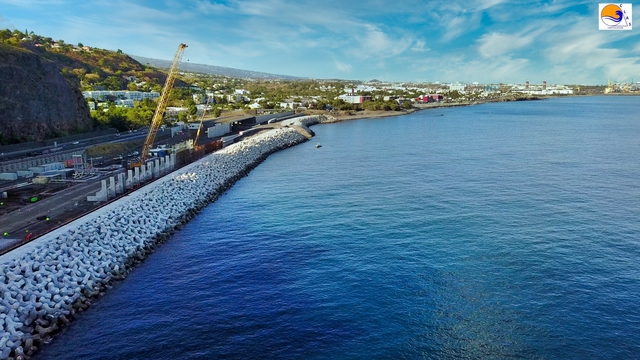
To find out about the long list of projects that have benefited from this practical tool, click on the link OUR REFERENCES.
